Well how the weather can change in 12 hours! After the heat of yesterday it was really misty this morning. Thanks to Carl and Gill, today we went touring west, to the Yorkshire Dales and visited one of the most famous of the tour attractions in Yorkshire, 'Fountains Abbey' near the town of Ripon. There are lots of Abbeys in the Yorkshire County and in particular the 'Dales'. This was because there was protection for the monks in the valleys and wooded areas.
Abbeys are places where men or women gather to devote their lives to God. They have been established in the north of England since the 7th century. Most of the Abbeys are now in ruins unfortunately, but 'Fountains Abbey' was absolutely huge and is now cared for by the National Trust. It was declared a UNESCO World Heritage site in 1986.
For more than 800 years 'Fountains Abbey' has stood on the floor of the Skell Valley. The river Skell has run down from the moors, through the steep-sided winding valley, since the Ice Age. The lives of many people, from monks and labourers to lords, ladies and kings, have shaped the estate that is called 'Fountains Abbey and Strudley Royal'.
It was founded in 1132 and the Abbey operated for over 400 years, until 1539 when Henry VIII ordered the dissolution of the monasteries. Two estates with their patchwork of farms and parkland came together under one owner in 1767, when William Aislabie bought Fountains Hall and the ruins of Fountains Abbey. These adjoined the Strudley Royal estate which he already owned, containing the Water Garden created by his father. The estate was acquired by the National Trust in 1983. [
For many centuries people were been drawn to 'Fountains Abbey' and the Cistercian monks welcomed travellers to their guesthouses. All activity was centred on the Abbey buildings, with the inner precinct protected by a high wall and the riverbank. The main path led from the west to the gatehouse. Tradesmen and labourers would be sent across the river to the mill and the workshops. It was a highly organised, self-sufficient community.
We didn't travel as far today, so it was a more leisurely start and after walking around the Abbey ruins for an hour and a half, we stopped off at the restaurant for lunch. The day was still fresh, so a sausage and onion roll was our choice to warm us up a bit. A walk around the lakes led us up to Anne Boleyn's Seat. This is also a particularly nice lookout. There were great views back to the Abbey ruins. In fact there were so many photo opportunities, we just kept posing and clicking.
The name 'Anne Boleyn’s Seat' originated because there was a decapitated statue on this spot, before the acquisition of the Abbey by Aislabie in 1768. It was seen that there was a link between the decapitated state of the statue, Henry VIII's second queen, and the dissolution of the monasteries which affected Fountains Abbey. The statue was restored to its original position in 2001.
The grounds are beautifully kept and it is a popular place to come and walk ones dog. You would need to be a member of the National Trust though, otherwise I would imagine you would have to pay to walk the dog. There were lots of doggies there and we decided it may have been, because there was a dog show in the grounds of the nearby racetrack. The dogs were all very different. The English really do love their dogs. During our travels today, we went past about 3 racetracks.
There was a surprise stop for us on the way home. Pete and I just get in the back and are happy wherever we are taken. Our stop was to the village of Knaresborough. Then it was a short walk to the most magnificent view from the castle. There is not much of the castle left and it is actually the property of the 'Queen of England'. It stands 120 feet above the river Nidd. There was a bowling green, which is also used as a putting rink. I don't think there would be too many WA bowlers, that would have enjoyed playing on the green. Well.....maybe Karratha would have thought it okay!
The view was stunning, across to the viaduct, people boating on the river, medieval homes and the church spire, all adding to the magical scene. Gill actually has a jigsaw puzzle of the view. Is it any wonder the scene has become a jigsaw? No doubt the scene has been painted by artists many times.
There were a few quirky windows and doors painted on walls around the town. There were narrow cobbled streets and nice looking shops, that you could spend an hour or two exploring. We did check out a very interesting building in which art works were sold. There were three floors of artisan works. Gill and Carl have purchased pieces from here.
It was then homeward bound for a delicious meal of salmon and a special vege that Gill and Carl purchase from the Wetherby fish shop. The vege was a new experience for our taste buds, which we enjoyed. Pete also took some tips from his cousin on baking the servings of salmon for 20 minutes. Delicious they were and quite simply done too.
A visit to Fountains Abbey in the Yorkshire Dales
Wednesday, September 14, 2016
 Ripon, England, United Kingdom
Ripon, England, United Kingdom
Other Entries
-
26Lots of walking and climbing today at North Devon
Aug 2619 days prior Clovelly, United Kingdomphoto_camera32videocam 0comment 2
Clovelly, United Kingdomphoto_camera32videocam 0comment 2 -
27An overnight stay in Falmouth Cornwall
Aug 2718 days prior Falmouth, United Kingdomphoto_camera22videocam 0comment 1
Falmouth, United Kingdomphoto_camera22videocam 0comment 1 -
28We've now been to the bottom of England's boot
Aug 2817 days prior Lands End, United Kingdomphoto_camera18videocam 0comment 0
Lands End, United Kingdomphoto_camera18videocam 0comment 0 -
29A Day filled with so much 'Family History'.....
Aug 2916 days prior Merton, United Kingdomphoto_camera14videocam 0comment 1
Merton, United Kingdomphoto_camera14videocam 0comment 1 -
30Time for Merton Goodbyes........
Aug 3015 days prior Merton, United Kingdomphoto_camera10videocam 0comment 0
Merton, United Kingdomphoto_camera10videocam 0comment 0 -
31A visit and lunch in 'Historic Plymouth'
Aug 3114 days prior Plymouth, United Kingdomphoto_camera16videocam 0comment 0
Plymouth, United Kingdomphoto_camera16videocam 0comment 0 -
32A little exploring of Tavistock
Sep 0113 days prior Tavistock, United Kingdomphoto_camera24videocam 0comment 3
Tavistock, United Kingdomphoto_camera24videocam 0comment 3 -
33A visit to Aunty Kath's & Kit Hill
Sep 0212 days prior Callington, United Kingdomphoto_camera16videocam 0comment 1
Callington, United Kingdomphoto_camera16videocam 0comment 1 -
34Boundy family gathering with the Aussies
Sep 0311 days prior Launceston, United Kingdomphoto_camera10videocam 0comment 1
Launceston, United Kingdomphoto_camera10videocam 0comment 1 -
35Sad to say another 'Goodbye'........
Sep 0410 days prior Harrowbarrow England, United Kingdomphoto_camera14videocam 0comment 1
Harrowbarrow England, United Kingdomphoto_camera14videocam 0comment 1 -
36A walk around the docks of Southampton
Sep 059 days prior Southampton, United Kingdomphoto_camera22videocam 0comment 0
Southampton, United Kingdomphoto_camera22videocam 0comment 0 -
37Checking out Hailsham with Aunty Gwen
Sep 068 days prior Hailsham, United Kingdomphoto_camera26videocam 0comment 0
Hailsham, United Kingdomphoto_camera26videocam 0comment 0 -
38A Visit to the Millennium Seed Bank at Wakehurst
Sep 077 days prior Hailsham, United Kingdomphoto_camera24videocam 0comment 1
Hailsham, United Kingdomphoto_camera24videocam 0comment 1 -
39Peter meets a cousin for the first time...
Sep 086 days prior Portsmouth, United Kingdomphoto_camera4videocam 0comment 2
Portsmouth, United Kingdomphoto_camera4videocam 0comment 2 -
40A Visit to Tiveys Farm
Sep 095 days prior Shackerstone, United Kingdomphoto_camera36videocam 0comment 5
Shackerstone, United Kingdomphoto_camera36videocam 0comment 5 -
41A visit to Wetherby..Award winning floral town
Sep 122 days prior Wetherby, United Kingdomphoto_camera16videocam 0comment 1
Wetherby, United Kingdomphoto_camera16videocam 0comment 1 -
42You just don't get a day like this in Whitby.....
Sep 131 day prior Whitby, United Kingdomphoto_camera23videocam 0comment 3
Whitby, United Kingdomphoto_camera23videocam 0comment 3 -
43A visit to Fountains Abbey in the Yorkshire Dales
Sep 14 Ripon, United Kingdomphoto_camera20videocam 0comment 1
Ripon, United Kingdomphoto_camera20videocam 0comment 1 -
44Just the two of us.....a day of exploring York
Sep 151 day later York, United Kingdomphoto_camera30videocam 0comment 0
York, United Kingdomphoto_camera30videocam 0comment 0 -
45Sorting, weighing, posting and a Wharfe walk
Sep 162 days later Wetherby, United Kingdomphoto_camera12videocam 0comment 0
Wetherby, United Kingdomphoto_camera12videocam 0comment 0 -
46Tracing the 'Carrott' routes today
Sep 173 days later Boston, United Kingdomphoto_camera32videocam 0comment 2
Boston, United Kingdomphoto_camera32videocam 0comment 2 -
47Time to hand back the 'Black Jag'.....
Sep 184 days later London, United Kingdomphoto_camera18videocam 0comment 5
London, United Kingdomphoto_camera18videocam 0comment 5 -
48Our flight to Dublin and our Welcome Dinner
Sep 195 days later Dublin, Irelandphoto_camera6videocam 0comment 2
Dublin, Irelandphoto_camera6videocam 0comment 2 -
49Trinity College, Glendalough & an Irish Show
Sep 206 days later Dublin, Irelandphoto_camera34videocam 0comment 0
Dublin, Irelandphoto_camera34videocam 0comment 0 -
50National Horse Stud, Hurling & then Cork
Sep 217 days later Cork, Irelandphoto_camera16videocam 0comment 0
Cork, Irelandphoto_camera16videocam 0comment 0 -
51Lots fitted into the day & Celtic Show to fini
Sep 228 days later Killarney, Irelandphoto_camera22videocam 0comment 1
Killarney, Irelandphoto_camera22videocam 0comment 1 -
52The Ring of Kerry
Sep 239 days later Killarney, Irelandphoto_camera16videocam 0comment 0
Killarney, Irelandphoto_camera16videocam 0comment 0 -
53Around the Dingle Peninsula
Sep 2410 days later Limerick, Irelandphoto_camera28videocam 0comment 1
Limerick, Irelandphoto_camera28videocam 0comment 1 -
54The 'Cliff's of Moher'......Ireland's Jewel
Sep 2511 days later Galway, Irelandphoto_camera22videocam 0comment 3
Galway, Irelandphoto_camera22videocam 0comment 3 -
55A Boat Trip to 'Inishmore' one of the Aran Islands
Sep 2612 days later Galway, Irelandphoto_camera26videocam 0comment 2
Galway, Irelandphoto_camera26videocam 0comment 2 -
56A long drive....and now Northern Ireland
Sep 2713 days later Londonderry, United Kingdomphoto_camera22videocam 0comment 3
Londonderry, United Kingdomphoto_camera22videocam 0comment 3 -
57Travelling the Antrim Coast & Giants Causeway
Sep 2814 days later Ballygalley, United Kingdomphoto_camera26videocam 0comment 0
Ballygalley, United Kingdomphoto_camera26videocam 0comment 0 -
58The final day of 'Country Roads of Ireland' tour
Sep 2915 days later Belfast, United Kingdomphoto_camera36videocam 0comment 2
Belfast, United Kingdomphoto_camera36videocam 0comment 2 -
59An early start...Dublin...then London
Sep 3016 days later London, United Kingdomphoto_camera8videocam 0comment 0
London, United Kingdomphoto_camera8videocam 0comment 0 -
60Sad to say 'Goodbye'....maybe we will be back
Oct 0117 days later Harlington, United Kingdomphoto_camera44videocam 0comment 1
Harlington, United Kingdomphoto_camera44videocam 0comment 1 -
61After 20 years....we are having another visit
Oct 0218 days later Singapore, Singaporephoto_camera10videocam 0comment 3
Singapore, Singaporephoto_camera10videocam 0comment 3

 Ripon, England, United Kingdom
Ripon, England, United Kingdom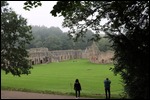
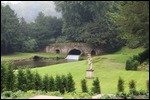
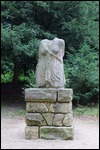
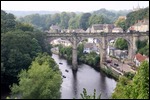



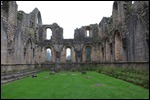
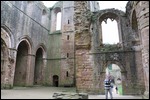
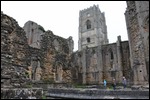
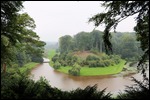
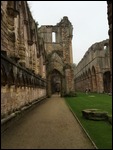
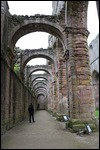
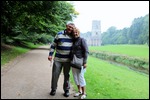
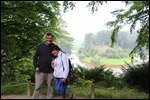
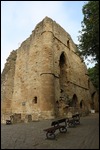
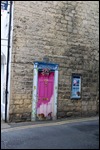
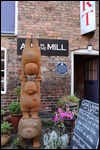
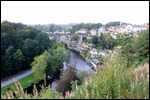

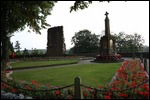
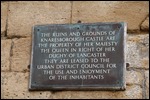
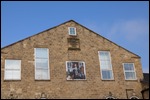
2025-05-23